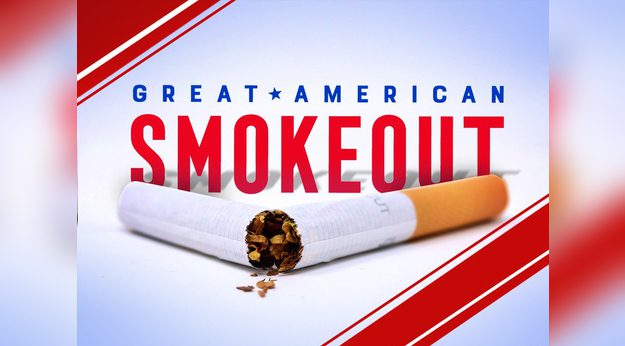‘Great American Smokeout’ challenges smokers to quit for a day
[anvplayer video=”5148423″ station=”998122″]
ALBUQUERQUE, N.M. — 34 million U.S. adults are smokers, even though smoking causes around 480,000 deaths each year.
Here in New Mexico, around 16% of adults smoke cigarettes and 5.6% vape – but 1 in 3 high schoolers also vape.
The “Great American Smokeout” is Nov. 17 and the American Cancer Society challenges smokers to quit for at least 24 hours. Doctors say just doing that can lower your blood pressure and raise your oxygen level, which puts you at a lower risk for heart attack and stroke.
The biggest challenge can be to continue quitting smoking, which is why NMDOH offers the 1-800-QUIT-NOW service. Through that line, people can access nicotine replacement therapies, such as free patches, gums and lozenges. Teens can also text “VAPEFREE” to 873373 to help with vaping.
State health officials are also offering other methods to achieve the goal of quitting.

“We understand it takes about 7-to-10 quit attempts to finally quit. For a lot of people, that’s a challenge to get to, so the Mini-Quit Challenge, it’s essentially baby quits or mini-quits, practices for individuals who feel that they won’t be able to successfully quit,” explained Esther Hoang, MPH, the program manager for NMDOH’s Nicotine Use Prevention and Control Program.
Hoang added the Mini-Quit Challenge gives updates and challenges that participants strive for each month. For November, it’s to not smoke or vape for two hours after they wake up.
If they’re successful, they can be enrolled in a drawing for a $100 gift card.
The NMDOH is also offering its Nicotine Use Prevention and Control Program to improve people’s lives by eliminating the harm of tobacco use and nicotine addiction. NUPAC uses effective strategies to reach, involve and mobilize individuals, organizations and communities to carve out policies and systems that support people to be nicotine-free.
To learn more about the Great American Smokeout, visit the NMDOH website or the American Cancer Society website or watch our interview with Esther Hoang in the video above.